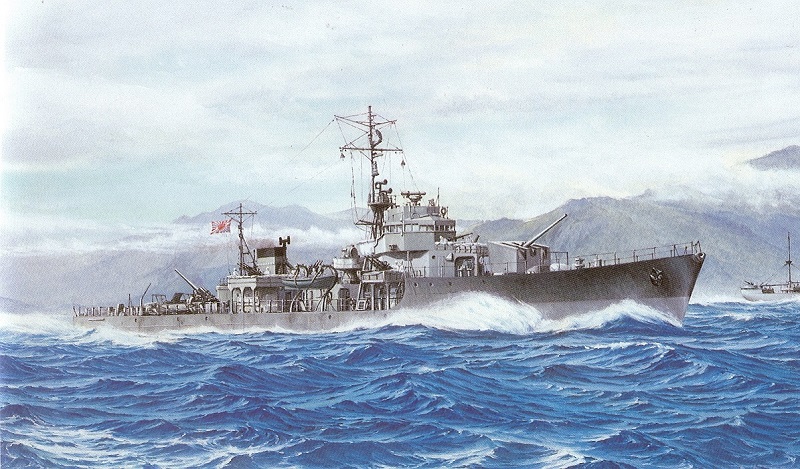© 2009-2011 Bob Hackett and Peter Cundall
Revision 1
5 April 1944:
Toyama. Laid down at Nipponkai Zosensho K. K.’s shipyard.
5 August 1944:
Launched and numbered CD-75.
21 April 1945:
Completed and registered in the IJN.
June 1945: American Operation “Barney”:
Tsushima Strait, Japan. Cdr George E. Pierce’s USS TUNNY (SS-282) with LtCdr (later Rear Admiral) Richard B. Lynch’s SKATE (SS-305) and LtCdr Lawrence L. Edge’s BONEFISH (SS-223) are organized as the “Polecats” and equipped with FM Sonar gear to detect mines. Once the minefields are detected and charted, shipping in the Sea of Japan will be open to predation by American subs. The Polecats foray into the Sea of Japan for the next several weeks and sink several ships.
15 June 1945:
Kaibokan of the 31st Escort Division commence defensive anti-submarine sweeps in the Toyama Bay area.
19 June 1945:
Nanao Bay. At 0615, BONEFISH torpedoes KONZAN MARU at 37-13N, 137-18E. The 31st Escort Division is alerted immediately and CD-63, OKINAWA (F) and CD-207 arrive at the scene of sinking. OKINAWA makes sonar contact with a submerged submarine and drops a series of depth charges set to a depth of 295 to 390 feet. Next, CD-63 and CD-207 attack. CD-75 and CD-158 are also dispatched to the same location. After another attack, the sonar contact is lost. Pieces of cork and oil are sighted at 37-18N, 137-55E. USS BONEFISH is lost with all 85 hands.
10 August 1945:
Departs Wakkanai, western Hokkaido, but runs aground. Later, scuttled off Niigata, western Honshu. [1]
30 November 1945:
Removed from the Navy List.
Authors' Note:
[1] May have hit a mine.
-Bob Hackett and Peter Cundall
Back to
Escort Page



